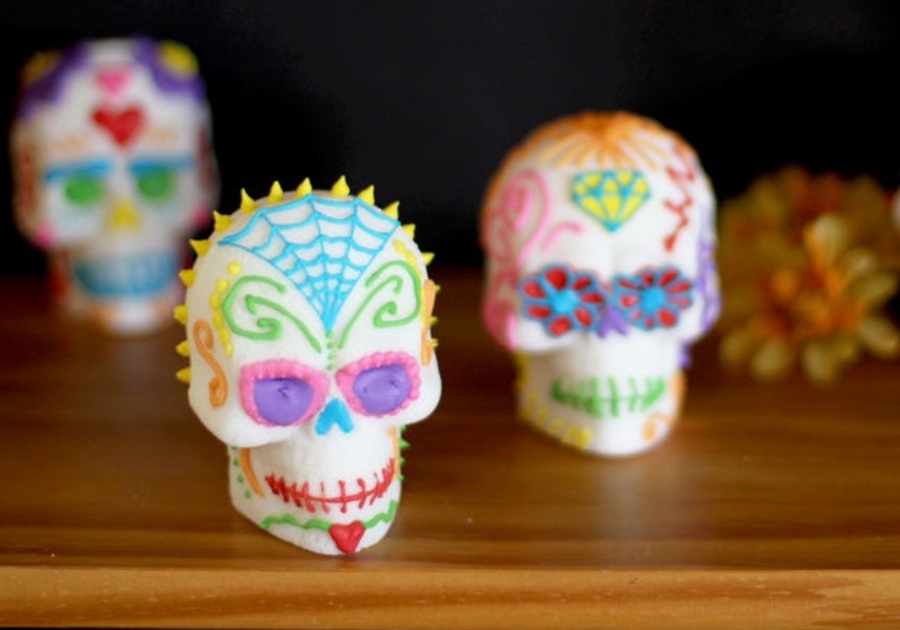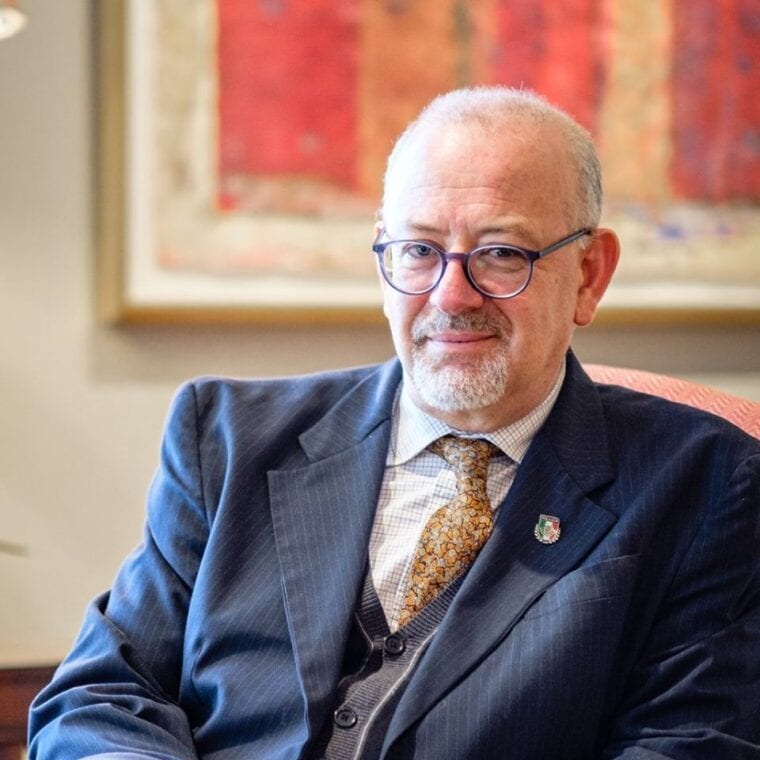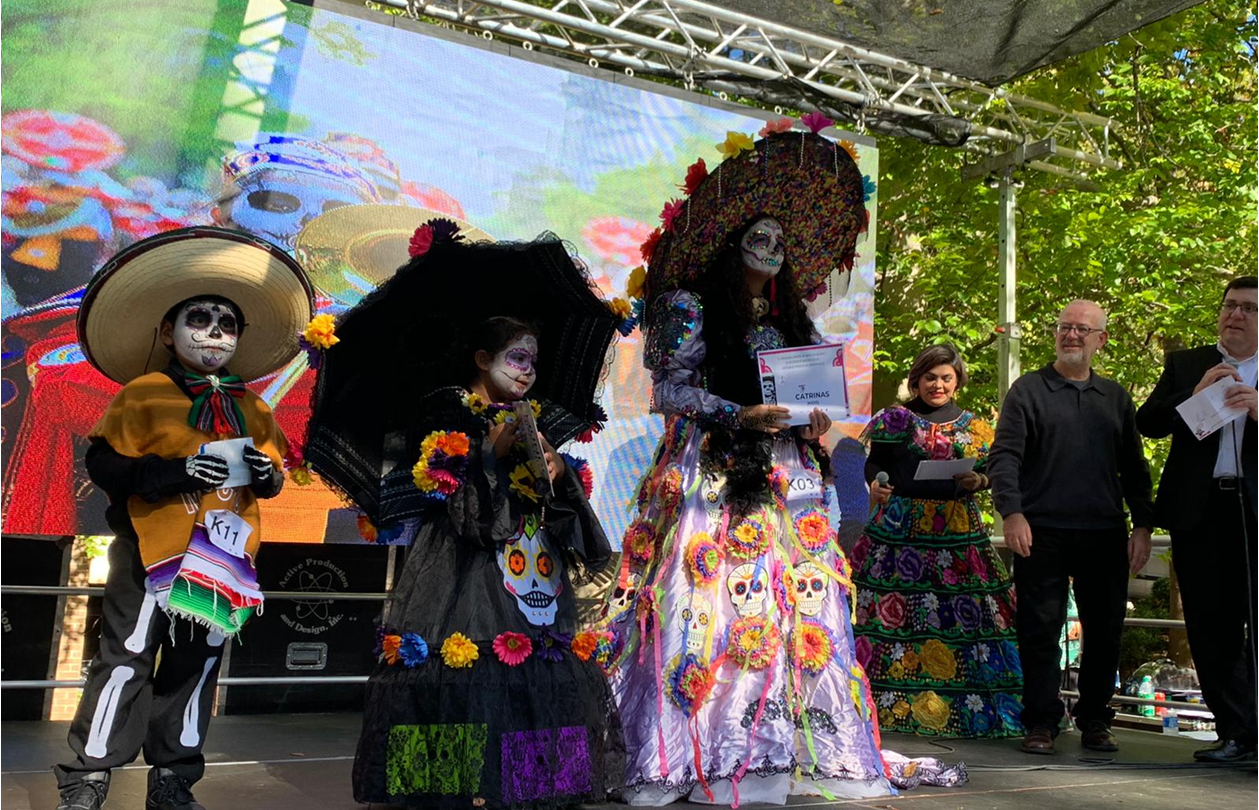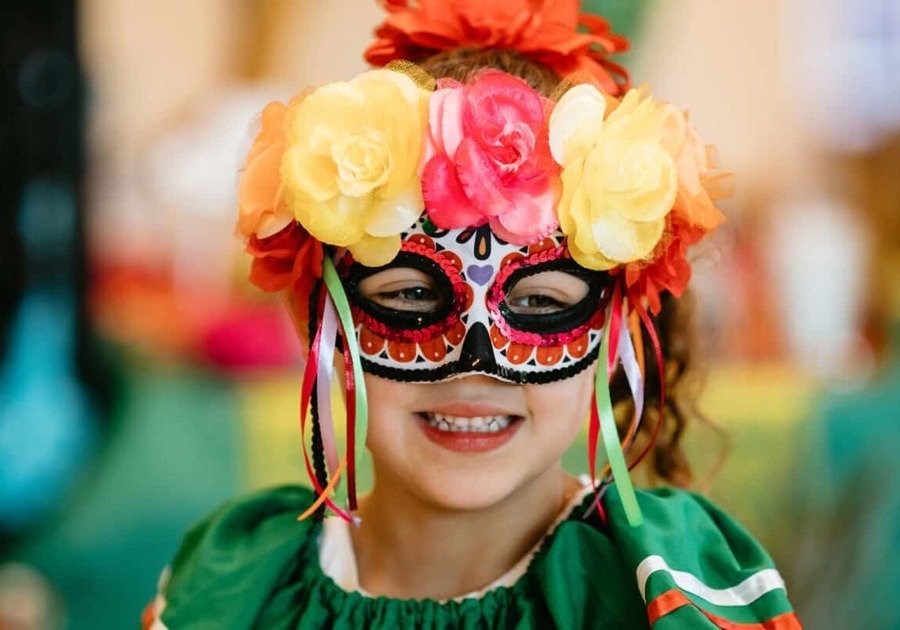Dia de los Muertos (the Day of the Dead) is not a Mexican version of Halloween. The Day of the Dead originated from Central American indigenous roots. The ancient indigenous peoples of Mexico (Aztecs, Purepecha, Nahua, Totonac and Otomí) have been celebrating this day for hundreds of years. It is a sacred, communal ceremony of cultural remembrance and recognition of those who have passed on.
Every year, November 1st (All Saints Day) is the day for deceased children (little angels) to be remembered with toys and colorful balloons adorning their graves. On November 2nd(All Souls Day), adults who have died are honored with displays of the departed's favorite food and drinks, as well as ornamental and personal belongings. Flowers, particularly the zempasúchil (an Indian word for a special type of marigold) and candles, which are placed on the graves, are supposed to guide the spirits home to their loved ones.
According to tradition, once a year, the dead return to the Earth to visit their loved ones, to eat, drink and be merry, just like they did when they were living.. It’s a time when Mexican families celebrate the lives of their departed loved ones with food, ceremony, and prayers. While it's strange for most of us to accept the fact that "death" and "festivities" can go hand-in-hand, for most Mexicans, the two are intricately entwined.
This may all seem morbid and somewhat ghoulish to those who are not part of that culture. But, for Mexicans who believe in the life/death/rebirth continuum, it's all very natural. This is not to say that they treat death lightly. They don't. It's just that they recognize it, mock it, even defy it. Death is part of life and, as such, it's representative of the Mexican spirit and tradition which says: "Don't take anything lying down - even death!"
First, the graves and altars are prepared by the entire family, whose members bring the departed's favorite food and drink. Candles are lit, the ancient incense copal is burned, prayers and chants for the dead are intoned and then drinks and food are consumed in a party/picnic-like atmosphere. At 6:00 pm, the bells begin to ring (every 30 seconds), summoning the dead. They ring throughout the night. At sunrise, the ringing stops and those relatives who have kept the night-long vigil, go home.
Although the Day of the Dead began in Mexico, any family who wants to remember and honor their deceased relatives can participate. Día de los Muertos isn’t meant to be a sad holiday—it’s a celebration of family and cultural identity. No matter your heritage, Day of the Dead is a perfect opportunity to pause and remember your loved ones who have passed on.
10 WAYS YOUR FAMILY CAN CELEBRATE THE DAY OF THE DEAD
1. Visit the gravesite of a loved one.
Rarely frequent the cemetery? Day of the Dead is a good opportunity to visit your deceased loved ones’ graves. This is a great opportunity to spruce up their memorial by pulling weeds and removing debris from the area before washing the grave marker. You might want to beautify the gravesite with candles, your loved one's favorite flowers or with marigolds (which have a smell said to attract the spirits).
2. Take a picnic to the cemetery where your loved one rests.
In Mexico, families often spend all night celebrating their loved ones in the graveyard, playing music, drinking, eating, and sharing stories. Most cemeteries in America close at night, but you could choose to spend the afternoon celebrating at their grave. Whatever feels right to you!
3. Bake pan de muerto, the sweet, yeasty "bread of the dead."
Include these in your own celebration, or give to friends and neighbors who are celebrating their loved ones who have passed.
4. Set up a memorial in your home.
According to Mexican culture, for the two days of Día de los Muertos, the deceased are able to return to earth and visit the living. An ofrenda is assembled at home to welcome the dead back and to refresh them after their long journey. Ofrendas typically include food, drink, candles, family photos. You can include a child's favorite toys or an adult's best-loved books or other items.
5. Make your own sugar skulls.

They're easy to DIY with only a few ingredients and a plastic mold purchased from a craft store or online. Decorate the skulls with brightly colored icing. If that seems too ambitious, make iced sugar cookies shaped like skulls or stop by a Mexican market to pick some up. Include them on your ofrenda, give them to others who knew your loved one or give some to a neighbor or friend who is celebrating Día de los Muertos. See recipe HERE.
6. Host a Day of the Dead Feast.
Invite friends and relatives for brunch or dinner. Serve tortilla soup, tamales, chicken mole, pan de muerto and caramel flan. Decorate with pots filled with marigolds. If you’re not looking to try a new recipe, instead make a loved one's favorite meal or an old family favorite. Spaghetti and meatballs? Sure! Kielbasa and cabbage? Absolutely! Whatever your cultural heritage is, find a way to honor it through food that’s meaningful to you and your loved ones. The true purpose is to remember and celebrate someone you love with family and friends. Holidays are always a great time for sharing stories. Gather together and listen to the stories of your grandparents, aunts and uncles, parents, or siblings. Propose a toast to those who have passed and ask people to share their memories.
7. Make a Day of the Dead Door Wreath.
Use brightly colored flowers, ribbon and leaves to craft a wreath. Place a large painted skull right in the center or embed several smaller painted skulls in the other decorations. Take it one step further and drape your whole front porch in colored lights, garlands of flowers or crepe paper banners. Again, this wreath would be a lovely gift for a friend or neighbor who celebrates.
8.Watch the movie, Coco.
Pixar's marvelous animated Day of the Dead film features an all-Latino principal cast and the journey of a young boy discovering his family's history. Critics and viewers alike praised it, and you're likely to fall in love, too. Invite a few people over to watch Coco with you—just be sure to have plenty of tissues handy.
9. Dress up as a Catrina or Catrín.

If you'll be attending a parade or hosting feast, add to the fun and get in on the action by dressing up. Search YouTube and Pinterest for ideas and instructions on clothing, face painting, floral crowns and more.
10. Attend a Day of the Dead parade or celebration.

The biggest Día de Los Muertos parades are in Mexico, but U.S. cities with large Hispanic populations, such as San Francisco, California; San Antonio, Texas; Albuquerque, New Mexico; and Fort Lauderdale, Florida, also host large Day of the Dead parades with music, dancing, and lots of giant skulls and skeleton costumes.
Local celebrations include:
Nov 6: Norcross Day of the Dead Festival and Parade
Nov. 6: Dia de los Muertos celebration at Oakland Cemetery
To learn more about the history of this tradition, click HERE.
INTERVIEW WITH JAVIER DIAZ DE LEON, THE CONSUL GENERAL OF MEXICO:
Day of the Dead in Mexico doesn’t mean to worship death, it means to celebrate life.
For more than 20 years, Atlanta History Center has had the honor and privilege of working in partnership with the Mexican Consulate and the Institute of Mexican Culture to present a yearly Día de Muertos (Day of the Dead) festival. In the wake of an all-virtual year due to the COVID-19 pandemic, we will host a smaller-scale version of the festival on October 31. Vice President of Public Relations & Programs for Atlanta History Center, Claire Haley, and the Consul General of Mexico, Javier Díaz de León, met up on Zoom to discuss the holiday itself and plans for the future. The following interview has been edited for clarity and length.

[CH]: For those who don’t know—What is Día de Muertos?
[JD]:In a nutshell, [the holiday] was a process through which Indigenous cultures would hold several traditions to connect and reconnect with family members who have passed away. It is not about fear, terror or anything like that. It is mostly about connection and honoring ancestors. It is about connecting, family, and love.
[CH]: Can you speak a little bit about Day of the Dead traditions?
[JD]: I should say also that a lot of what is now imagery around Día de Muertos also is part of what Mexico is. Mexico is a syncretism of a pre-Hispanic, Indigenous culture and Indigenous traditions that we are very proud of, but also at the same time, a strong influence from Europe. What we Mexicans are is a mixture of that, and we are very proud to be that. We are very proud of our Indigenous background, but also proud that part of what we are comes from other parts of Europe, a lot from Spain. Through Spain, we also were influenced by other civilizations like the Middle East.

Day of the Dead celebrations
One of those [traditions] are catrinas, which are representations of elegantly dressed women or men with the face of a skull. Catrina is a term in Spanish that means a fancy, well-dressed woman of upper social class. This [symbol] mostly doesn’t come from the pre-Hispanic period and was incorporated into popular culture at the beginning of the 20th century by a celebrated Mexican artist and designer, José Guadalupe Posada. Posada made social commentary through his work, including the catrina. He was making fun of or criticizing what he perceived about the middle/higher classes in Mexico, who were very adamant about being portrayed as European. They dressed in opulent ways and tried to distance themselves from the crowd by being highly elegant and European. At that time in Mexico, that meant mostly French. He was making fun of them by saying that they dress [elegantly] but they’re actually skulls. That’s where the regional image of la catrina comes from.
It became particularly famous due to another Mexican artist, mural artist Diego Rivera. 20-30 years after Posada’s work, Diego Rivera painted a mural about an afternoon in the Alameda, a central park in Mexico. You can see it today in Mexico City. It is a portrayal of society at that time, but Rivera was also edgy in his social commentary. Right in the middle of the mural is the catrina. There are a lot of important political and historical characters in the mural, but the catrina is beautifully placed in the middle. Through that, Rivera made the catrina a social phenomenon in Mexico. Although it was created by Posada 20 or 30 years before, Diego Rivera really made it explode. Now it’s everywhere. What we see now, coming back to Day of the Dead, is a mixture of pre-Hispanic tradition but also a lot of traditions incorporated along the way, like the catrina was in the early 20th century.
[CH:] What are your hopes for this holiday coming out of the pandemic?
[JD:] What I would hope? I would hope that we leave this thing, this pandemic, behind as soon as possible and we go back to normality. What does that mean? It means back to the large events that we’ve been so honored and grateful to do with the History Center in the past. To have thousands of families together listening to music, sharing food, sharing information, sharing their cultural expressions, and sharing their love and their admiration for our ancestors.
It also means being the conduit for traditions like this one, Day of the Dead, to become more and more a part of the mainstream cultural landscape here in the United States. One of the beautiful things is that a few years ago, you could still see a little bit of confusion between Halloween and the Day of the Dead in the United States. That was still a little bit there, but every year I see it less. There’s been so much progress in terms of people from non-Mexican origin here in the United States having a clear understanding of the Day of the Dead and to embrace it and to really understand the distinct holiday.
*Shared with permission from the Atlanta History Center.




